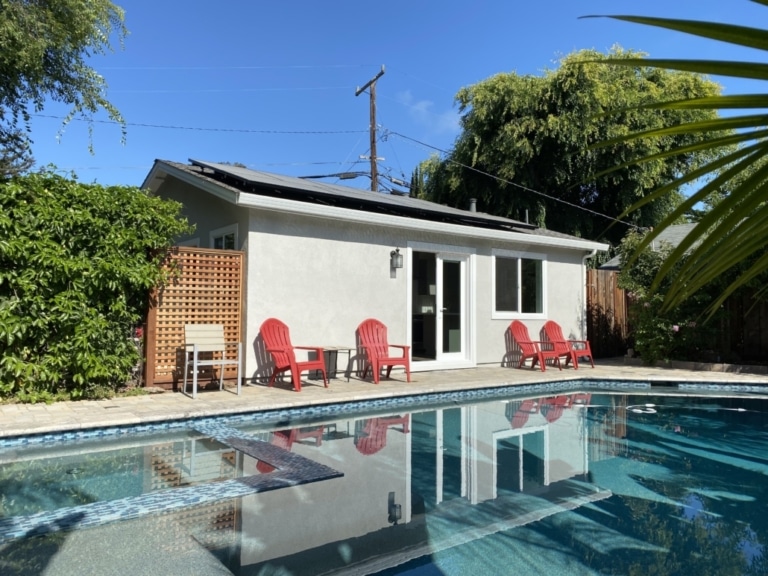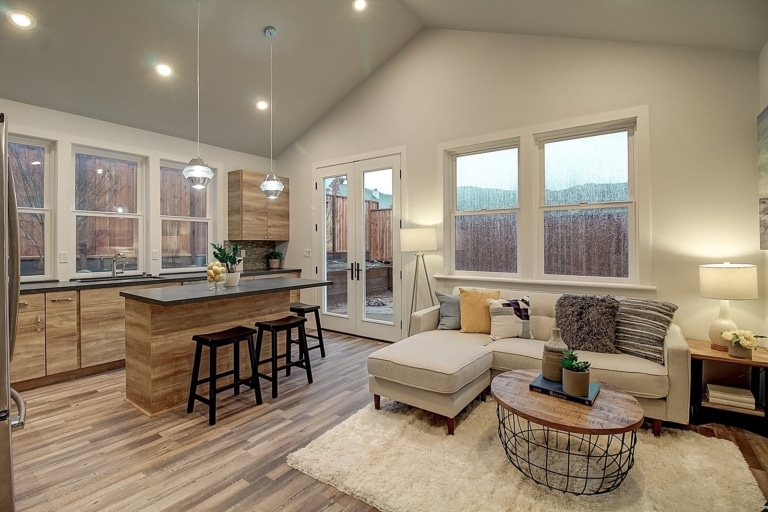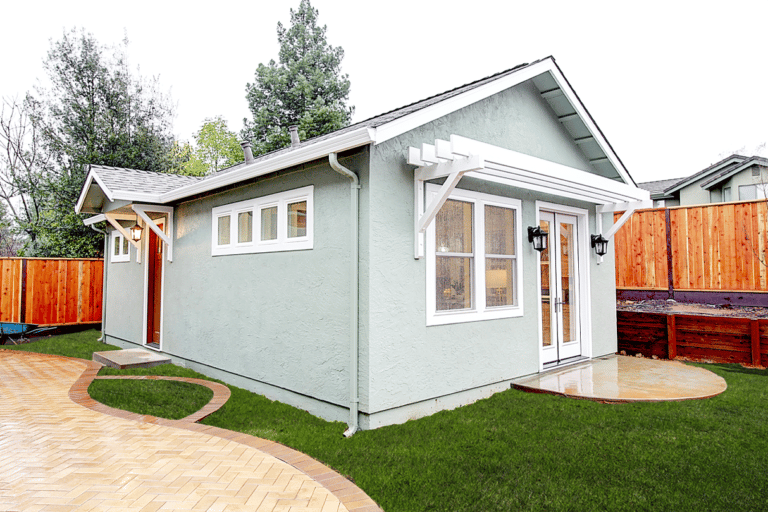Understanding the Essentials of Lighting for Your Home Remodel
To truly bring your home renovation to life, you’ll need a layered lighting plan. And for that, you’ll need to understand the three types of lighting and how much light is needed in the space. We’ve also compiled a list of common fixture types to make shopping for the right fixtures easier.
The Three Types of Lighting
A layered lighting plan is a combination of three basic types of lighting: ambient lighting, task lighting, and accent lighting. When strategically added to a space, these types of fixtures work together to create functionality, style, and beauty.
Ambient Lighting – Ambient lighting, or general lighting, is used for overall illumination of a space. Ambient lighting provides a comfortable level of brightness, allowing you to move freely (and safely) about. Ambient lighting is necessary for most rooms, and is usually accomplished with ceiling-mounted fixtures, recessed lighting, track lights, or chandeliers.
Task Lighting – Task lighting is just that – light for your daily tasks. Task lighting provides a smaller beam of light in a concentrated area, making it ideal for working, reading, cooking, and grooming. Floor lamps, reading lamps, under-cabinet lighting, and over-head stove lights are all considered task lighting, provided they effectively eliminate shadows and glare.
AccentLighting – Much like adding the perfect jewelry to an outfit, accent lighting provides a dramatic focal point in a room. A large chandelier in a foyer, for example, will emphasize high ceilings, while track lighting can draw the eye to a prominent piece of artwork. Be aware, though, accent fixtures should give off at least three times as much light as the ambient lighting around it.
Making a Lighting Plan
Clarify Your Lighting Goals. What kind of tasks you’ll be accomplishing in this room? Will you be working or relaxing? Lighting goals for a kitchen remodel are bound to be different than that of a master bath renovation, for example, so it’s important to determine the functionality of your space before you settle on a specific fixture.
Take Stock of Your Style. Now take a moment to evaluate the style of your décor. While an ornate fixture could look wonderful with a modern Victorian backdrop, it might seem out of place against Italian country chic. Instead, recognize what aspects of your home remodel you might like to match. After all, that brushed steel pendant lantern could go perfectly with the nickel handles on your cabinetry!
Figure Out How Much Light You Need. Most people are used to thinking about light in wattage. But when it comes to a lighting plan for your renovations, it’s not about watts. It’s about lumens. Watts measure how much energy a bulb consumes while lumens are a measure of how much light the bulb gives off. Lumens, therefore, are the more accurate measurement of the amount of light needed to illuminate a room. To find out how much light you’ll need in lumens, simply multiply the square footage of the space by 40. For example, 150sq ft x 40 = 6,000 lumens.
Build Your Plan. Every layered lighting plan starts with a central source of ambient light. Choose a chandelier, ceiling, or wall-mounted fixture to provide a general source of light to build upon. Once you’ve chosen the main ambient fixture for the space, identify the task lighting needs of the room. This could be some track lighting above the kitchen sink, or a glare-free floor lamp for your favorite reading chair. Finally, pick at least one accent fixture to highlight the focal point of the room. Pendant lighting and track lighting are excellent choices for accent fixtures.
Pick the Right Bulbs. Choosing a combination of incandescent and energy-efficient LED bulbs to suit your fixtures can add interest to a room while also supplying the necessary number of lumens. Consider incandescent bulbs for a warm ambient glow from chandeliers, flush mounts, and semi-flush mounts, and saving the cooler tone of LED bulbs for task lighting.
Types of Lighting
Once you start looking for light fixtures, you’ll discover the design choices are endless! To make sifting through the sea of options a little simpler, try narrowing your search by these common types of lighting.
Chandelier – A chandelier is a common decorative hanging light with branches for several light bulbs or candles. Chandeliers are excellent ambient light options typically used in the dining room, but they can be used in other rooms for a touch of glamour. Try using one in the foyer or the master bathroom for an eye-catching accouterment!
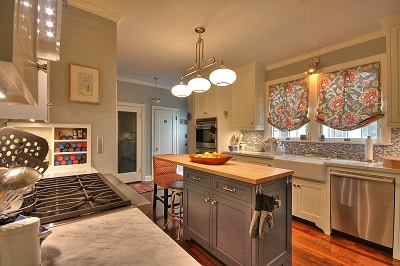
Sconces and Uplights – Simultaneously functional and decorative, sconces are usually affixed to the wall, making them an excellent choice for lighting hallways and bathrooms. Uplights shine light upward towards the ceiling and are often used as accent lighting.
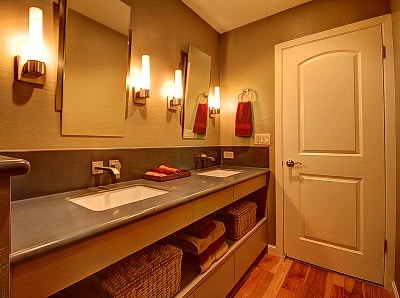
Pendants – A cousin to the chandelier, the pendant light is a single light fixture suspended from the ceiling with a cord, chain, or metal rod. Pendant lights provide an ambient glow from above, making them perfect for either task lighting or accent lighting. Consider hanging a pendant light above a kitchen island or a sitting room side table.
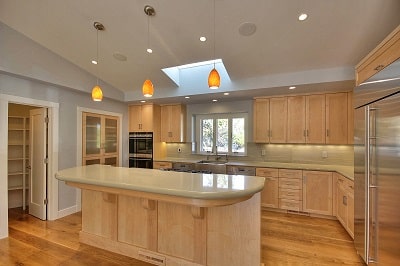
Flush Mount – This is typically a dome-shaped light mounted flush with the ceiling to provide ambient light for a whole room. Though these fixtures can be mounted in any room, homeowners often choose flush mount light fixtures for kids’ and guest bedrooms.
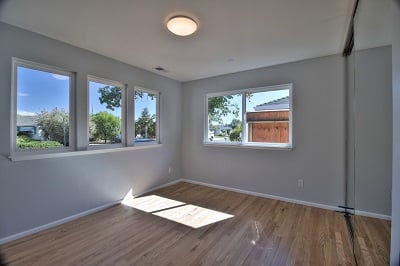
Semi Flush Mount – Semi flush mount fixtures are similar to flush mounts, as they provide a wide area of ambient light. However, semi flush mount fixtures usually include decorative components that extend just below the ceiling level.

Track Lighting – Track lighting combines multiple bulbs on a single bar that can be positioned to provide task or accent lighting exactly where it’s needed.
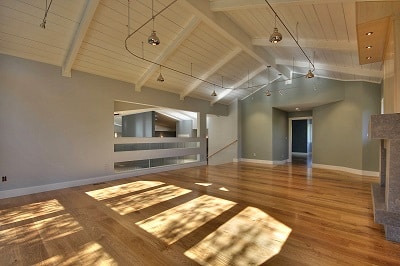
Recessed Lights – Recessed lights, or can lights, are inserted into the ceiling and used for general lighting purposes. 4-inch recessed lights should be placed at least 4 feet apart, while 6-inch sizes should be placed at a distance of 6 feet apart.

Under Cabinets or Hidden Lights– Under cabinet, or “hidden” lights are ideal for illuminating cooking surfaces. Or, try placing them above built-in cabinets to add a soft, luminescent glow to the room!

Outlet Placement
As you’re creating your lighting plan, don’t forget to consider the placement of electrical outlets. Nothing is more frustrating than realizing that the nearest outlet is too far away. Consider installing outlets in handy places like kitchen islands, on the living room floor, or even on the inside of cabinets. Trust us, you’ll be happy you did.

Dimmer Switches
Nothing says romance quite like mood lighting. Just the same, lower light levels can turn a bathroom into a spa, a bedroom into a boudoir, or a bright, bustling kitchen into a swanky tapas venue. Want the effect without fishing out the emergency candles? Try a dimmer. They’re easily installed in place of your regular light switch, and make soothing ambiance achievable with the touch of a button.
Got Questions? We’re here to help.
However you decide to brighten your home, you can’t go wrong with a combination of ambient, task, and accent lighting. The layered look of these different fixtures is certain to make your new house renovation feel like home.
Need an expert opinion? Whether you’re currently remodeling or just curious, the friendly team at Acton Construction is here to answer all of your questions. Contact us for a free in-home consultation, or visit our design gallery for the latest in modern home renovation. We promise, it will be nothing short of illuminating.

